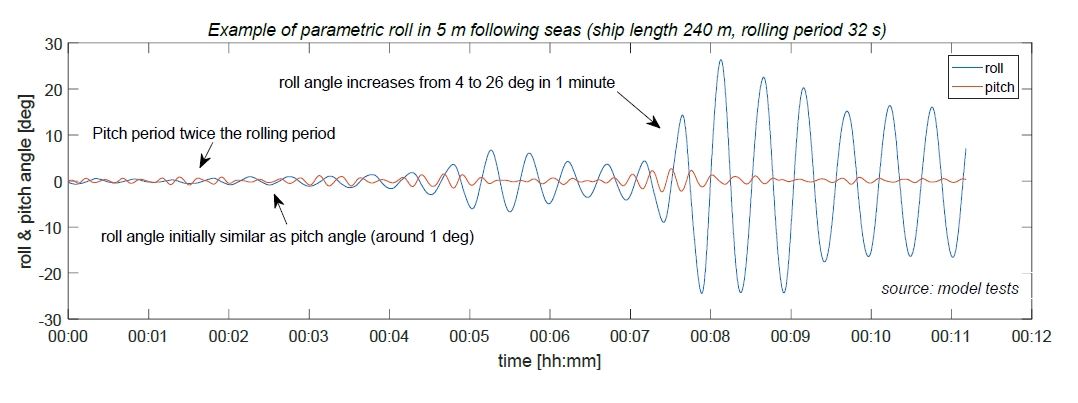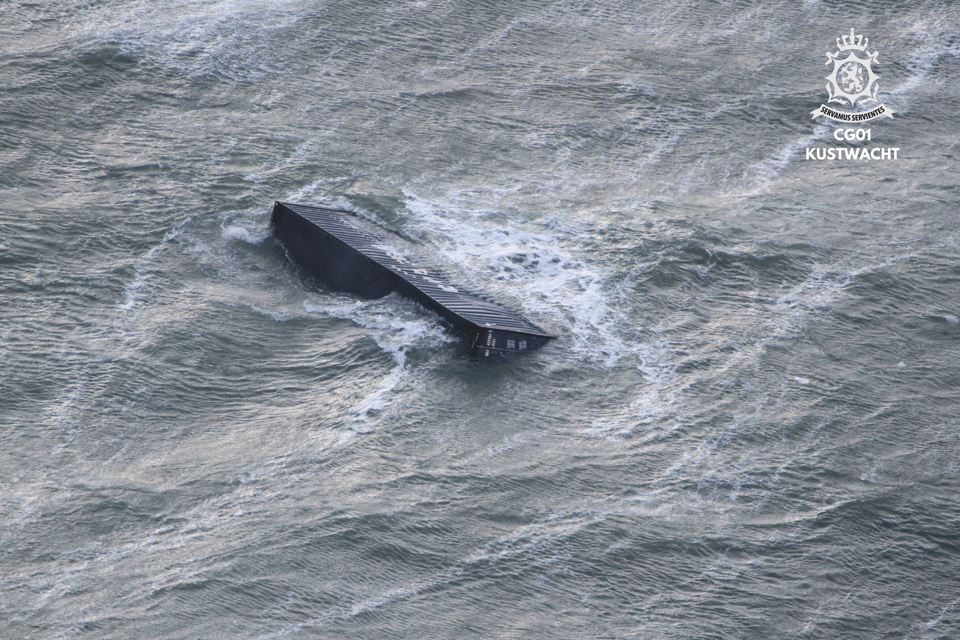The TopTier Joint Industry Project (JIP) was put in place by industry to find ways to avoid container loss incidents, and initial results show that parametric rolling in following seas was especially hazardous. The JIP has released a notice to mariners that describes how container vessel crew and operational staff can plan, recognise and act to prevent parametric rolling in following seas.
A series of incidents with exceptional container losses occurred during the winter season 2020-2021 led to the TopTier JIP.
Container ships are vulnerable to parametric rolling in following sea conditions. Unfavourable combinations of rolling period, vessel speed, heading, and wave conditions, can trigger sudden and extremely rapid increase of roll motions to hazardous levels, threatening the safety of vessel, crew and cargo. This can happen in relatively mild wave heights.
Also read: Video: The forces that caused the MSC Zoe to lose containers explained
What is parametric rolling?
Parametric rolling can occur when:
- The rolling period is twice the wave encounter period.
- Wave lengths are in the range of the vessel length.
In these conditions the passing waves cause a variation in waterplane area that can trigger vessel instability in roll. This is most common in heavy head seas, but can occur also in following seas, when the rolling period is long. Even a few high waves after each other may trigger unexpected large roll motions, as shown by the measured time traces of roll and pitch motions in the figure below. In the example, the ship is 240 metres long with a natural roll period of 32 seconds and is sailing in a 5-metre following sea.

When to be alert?
Ships at low GM are vulnerable to parametric rolling in following seas, especially when there are waves with a long length from the stern quarter. Long term routing and short term vessel handling should consider the risk of parametric rolling in following seas when:
- Vessel rolling period is long because of low GM (rolling periods in excess of 20 seconds for ships with length above 250 metres). The rolling period should be measured after departure, as rules of thumb based on GM are not always accurate.
- Following sea conditions (or close to) are expected or experienced.
- The rolling period is twice the wave encounter period. The wave encounter period is equal to the pitching period and can be measured with a stopwatch.
- Wave lengths are longer than two-thirds of the ship length.
The combination of above conditions should be avoided already in route planning by calculating the wave encounter period and wave length using the vessel speed, the forecasted wind and swell wave periods and direction.
Also read: Could bilge keels be the answer to the rolling of container ships?
How to recognise the first signs or increasing risk?
A vessel can go into parametric rolling very suddenly and unexpectedly. To prevent it, crew should therefore learn to recognise the conditions and danger signs at an early stage. Tell-tale behaviour is the synchronisation between the gentle roll and pitch motions as waves pass underneath, especially when the vessel starts rolling alternatingly from port onto starboard shoulder in perfect sync with successive pitching cycles. This indicates that wave encounter periods are close to half of the roll period and in this condition parametric rolling can happen at any time if waves are high enough.
What to do when it happens?
Break the synchronisation between the roll period and the encounter period. The most direct way to do this is to change heading to beam or bow quartering seas. Avoid abrupt steering. The heading change can be combined with a speed increase but only if it does not increase the risk of other hazards. Changing course may seem counterintuitive, but is the only way to reduce the risk of parametric rolling in following seas.
Also read: Joint Industry Project to tackle container loss at sea
This notice to mariners in an initiative of the TopTier JIP. The Joint Industry Project TopTier is initiated to address the loss of containers with active participation of major stakeholders. More explicit guidance on the hazard of parametric rolling in following seas is work in progress.
Picture (top) by Netherlands Coast Guard.








